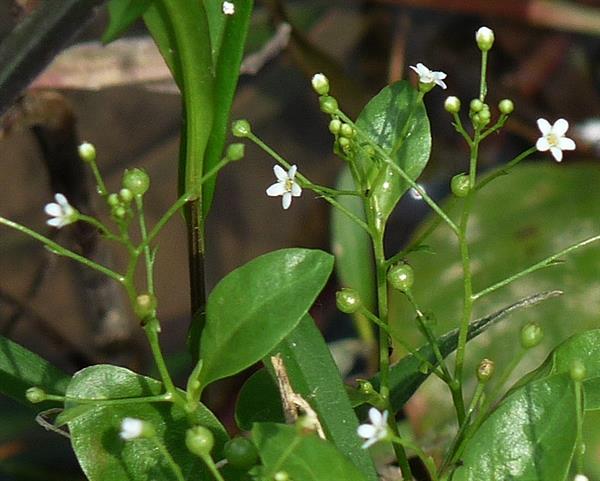
Origin/Endemic status: Native
Taxonomy Comments: Sometimes treated as a subspecies or other component of the European S. valerandi; the American plant is sufficiently distinct to warrant specific status. Cholewa in FNA8 (2009) states: "Some taxonomists include this species within the European S. valerandi; that species has larger flowers and capsules, fewer racemes, and staminodes occurring in clusters of one to three. No specimens have been found of true European S. valerandi in the flora area; previous specimens labeled as S. valerandi are native species, usually S. parviflorus". A different opinion is expressed by Jones et al. (2012), who prefer to treat S. parviflorus within a broadly circumscribed S. valerandi. If treated at species rank (as here), the name S. floribundus has also sometimes been used for the North American taxon at species rank; S. parviflorus has nomenclatural priority over S. floribundus by a month.
Synonymy: = Ar, Bah, F, FNA8, GrPl, GW2, Il, K3, Mi, Pa, RAB, Tat, Tn, Tx, Va, W, WV; = Samolus floribundus Kunth – C, G, Meso4.1, Mex, S; = Samolus valerandi L. ssp. parviflorus (Raf.) Hultén – Fl5, K1, NcTx, NE, WH3; < Samolus valerandi L. – K4, NY
Wetland Indicator Status:
- Atlantic and Gulf Coastal Plain: OBL (taxonomic lump from wetland indicator species)
- Eastern Mountains and Piedmont: OBL (taxonomic lump from wetland indicator species)
- Great Plains: OBL
- Midwest: OBL
- Northcentral & Northeast: OBL
Heliophily: 6
Hover over a shape, letter, icon, or arrow on the map for definition or see the legend.
 © Richard & Teresa Ware CC-BY-NC, permission granted to NCBG | Original Image ⭷
© Richard & Teresa Ware CC-BY-NC, permission granted to NCBG | Original Image ⭷ © Alan M. Cressler | Original Image ⭷
© Alan M. Cressler | Original Image ⭷ © Gary P. Fleming | Original Image ⭷
© Gary P. Fleming | Original Image ⭷ © Richard & Teresa Ware CC-BY-NC, permission granted to NCBG | Original Image ⭷
© Richard & Teresa Ware CC-BY-NC, permission granted to NCBG | Original Image ⭷ © Jay Horn source | Original Image ⭷
© Jay Horn source | Original Image ⭷Feedback
See something wrong or missing on about Samolus parviflorus? Let us know here: (Please include your name and email if at all complicated so we can clarify if needed.)
Cite as...